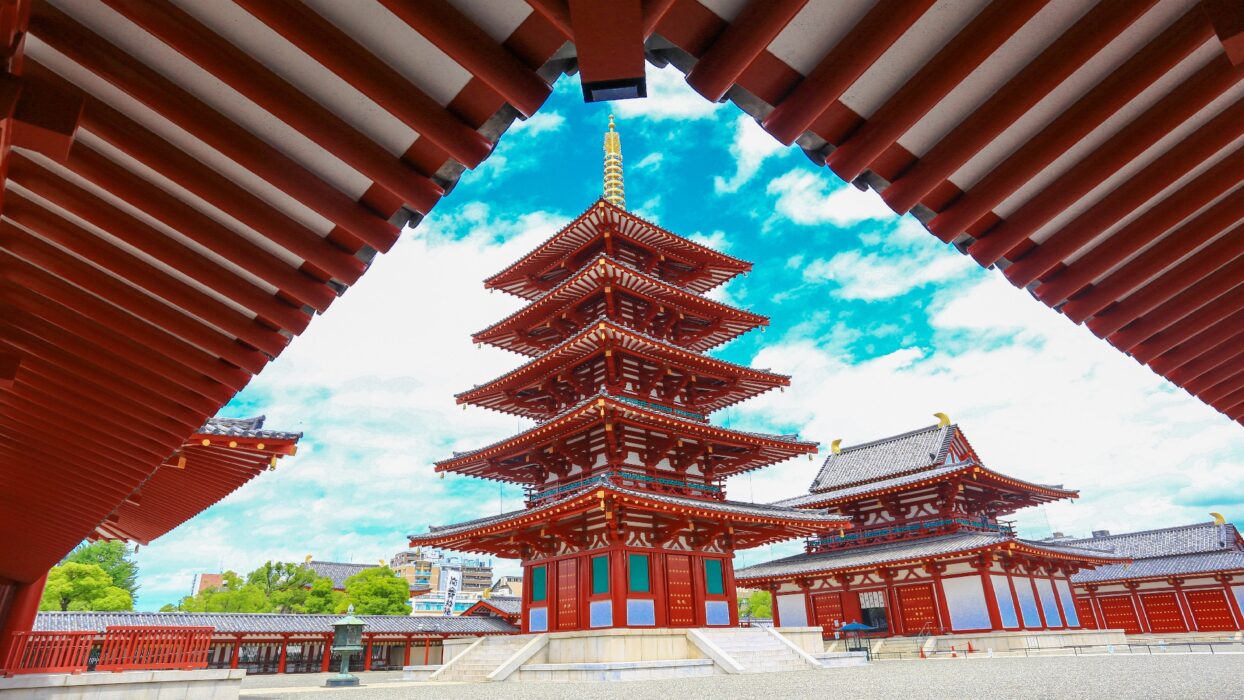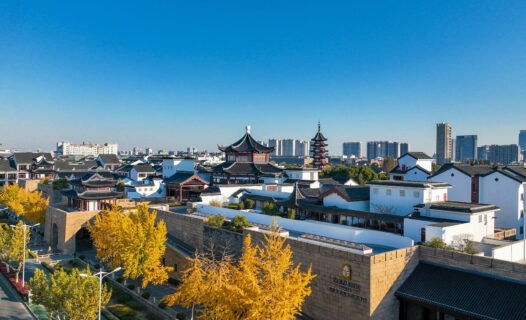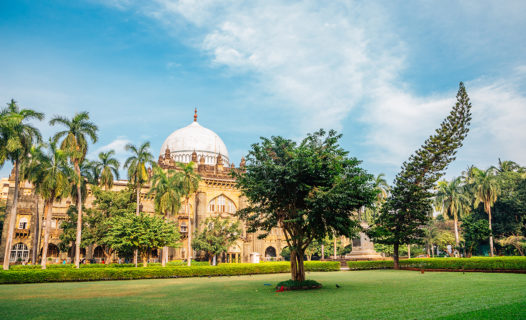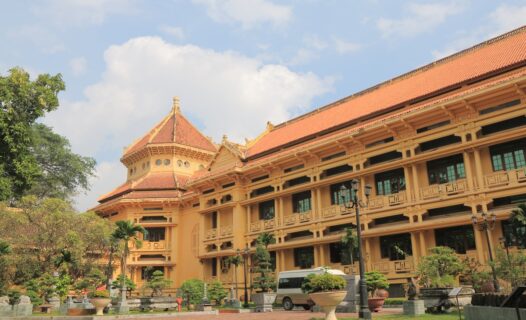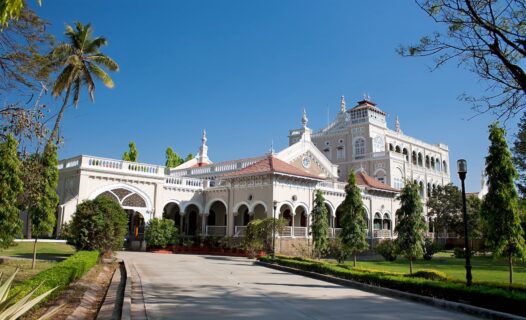Kyoto’s Culinary Cherry Blossom Trail: Savor Seasonal Flavors and Hidden Gems
As spring paints Kyoto in delicate shades of pink, the city transforms into a breathtaking canvas of cherry blossoms, or sakura, captivating locals and travelers alike. This enchanting season, which typically graces the city from late March to early April, is more than just a visual feast; it’s a time for celebration, reflection, and, of course, indulging in seasonal culinary delights. The cherry blossom season holds immense cultural significance in Japan, symbolizing the fleeting beauty of life and the arrival of warmer days. It’s during this magical time that Kyoto’s food culture truly shines, offering a unique opportunity to savor authentic dishes that celebrate the season.
From traditional sweets adorned with sakura petals to savory dishes inspired by the blossoming trees, Kyoto’s culinary landscape is a delicious reflection of its rich heritage. Embrace the spirit of hanami, or flower viewing, as you explore the city’s hidden gems and iconic eateries, each serving up flavors that are as ephemeral as the blossoms themselves. Ready your taste buds for a delightful journey through Kyoto’s cherry blossom food culture!
Discovering Kyoto’s Cherry Blossom Food Culture
In Kyoto, food is not just sustenance; it’s a celebration of nature’s bounty and the changing seasons. The cherry blossom season ushers in a variety of seasonal flavors that are deeply rooted in the city’s culinary traditions. Local chefs and home cooks alike take pride in using fresh, seasonal ingredients that reflect the beauty of the sakura. Dishes are often crafted to evoke the essence of spring, showcasing vibrant colors and delicate flavors.
One of the most beloved seasonal treats is Sakura Mochi, a sweet rice cake filled with red bean paste and wrapped in a pickled cherry blossom leaf. This delightful confection not only tantalizes the taste buds but also embodies the spirit of hanami. Another popular dish is Hanami Dango, colorful rice dumplings served on a skewer, perfect for enjoying under the blooming trees. These dishes are more than just food; they are a way for locals to connect with nature and celebrate the fleeting beauty of the blossoms.
As you wander through the streets of Kyoto during cherry blossom season, you’ll notice that many restaurants and cafes incorporate sakura into their menus, offering everything from Sakura Sake to sakura-infused desserts. This emphasis on seasonal ingredients not only enhances the dining experience but also provides a deeper understanding of local customs during hanami. Whether you’re a foodie or just looking to soak in the atmosphere, Kyoto’s cherry blossom food culture is a feast for the senses.
Seasonal Delicacies to Savor Under the Sakura
As you stroll through Kyoto’s picturesque parks and gardens, don’t miss the chance to indulge in some must-try seasonal dishes that perfectly complement the cherry blossoms. Sakura Mochi and Hanami Dango are just the beginning. You’ll also want to seek out Sakura Sake, a fragrant rice wine infused with cherry blossoms, which adds a floral note to your sipping experience. Imagine toasting under a canopy of pink petals, a moment that feels straight out of a postcard!
Many locals have their own personal favorites when it comes to cherry blossom treats. For instance, one Kyoto resident fondly recalls her childhood memories of making Hanami Dango with her family, a tradition that continues to this day. The joy of sharing these colorful dumplings with friends while enjoying the blooming sakura is a cherished part of the season.
Another delightful dish to try is Sakura Abura Soba, a cold noodle dish topped with cherry blossom petals and seasonal vegetables. This refreshing meal is perfect for those warm spring days when you want something light yet flavorful. The combination of textures and tastes will surely leave you craving more!
With so many delightful options, it’s easy to see why Kyoto’s cherry blossom food scene is a highlight for both locals and travelers. Each bite is a celebration of spring, and every dish tells a story of tradition and seasonal change.
Best Restaurants with Cherry Blossom Views
What could be more enchanting than enjoying a delicious meal while surrounded by the breathtaking beauty of cherry blossoms? Kyoto boasts several restaurants that offer stunning views of sakura, making for an unforgettable dining experience. One standout spot is Niku-tei Yui, renowned for its exquisite wagyu beef and a fantastic view of the cherry trees in full bloom. Reservations are highly recommended, especially during peak cherry blossom season, as this place fills up quickly!
Another gem is Enman Izakaya Kogetsu, where you can savor traditional izakaya fare while taking in the picturesque landscape adorned with sakura. The ambiance is cozy and inviting, perfect for a casual meal with friends or family. Be sure to visit during the late afternoon or early evening when the blossoms are beautifully lit by the setting sun, creating a magical atmosphere.
When planning your visit, consider making reservations in advance to secure the best seats. Timing is everything, so aim for lunch or dinner during the early evening for optimal views. Pair your meal with a seasonal sake, and you’ve got the perfect recipe for a memorable experience!
Hidden Gems: Off-the-Beaten-Path Dining Experiences
While Kyoto is famous for its iconic eateries, there are numerous hidden gems that offer authentic flavors and unique dining experiences. Tucked away in quaint alleyways and residential neighborhoods, these spots often showcase the true essence of Kyoto’s culinary heritage. One such place is Yudofu Sagano, a charming little restaurant specializing in yudofu, or boiled tofu. Nestled near the scenic Arashiyama area, this eatery serves up silky tofu in a serene setting, often accompanied by seasonal vegetables and a light dipping sauce. Dining here feels like stepping into a local’s home, where every dish is prepared with love and respect for the ingredients.
Another must-visit is Okonomiyaki Katsu, a cozy spot where you can indulge in the savory Japanese pancake known as okonomiyaki. Here, you can even try your hand at making your own! The friendly staff will guide you through the process, ensuring a fun and interactive meal. Pair your creation with a local beer or sake for a truly delightful experience.
These hidden gems not only serve delicious food but also offer a glimpse into the everyday lives of locals, making your culinary journey in Kyoto even more memorable. Be sure to ask the staff for their recommendations, as they often have special dishes that are not on the menu!
Kyoto’s Street Food Scene: A Taste of Tradition
No visit to Kyoto is complete without diving into its vibrant street food scene! As you wander through bustling markets and lively streets, keep an eye out for food stalls offering a variety of delicious bites. One of the most popular street foods is Yaki Dofu, grilled tofu served with a savory sauce. This dish is both simple and satisfying, making it a favorite among locals and visitors alike.
Another must-try is Kushikatsu, skewered and deep-fried goodness that you can find at various street vendors. These crispy treats come in a variety of flavors, from vegetables to meats, and are often served with a tangy dipping sauce. Enjoy them while strolling along the Philosopher’s Path, surrounded by cherry blossoms.
For those with a sweet tooth, don’t miss out on Matcha Soft Serve. This creamy delight, made from Kyoto’s famous matcha, is the perfect way to cool down after exploring the city. You can find it at various stalls near popular attractions, and it’s a treat you won’t want to miss!
Street food is an integral part of Kyoto’s culinary culture, especially during cherry blossom season. It’s a fantastic way to sample local flavors while enjoying the festive atmosphere. So grab your favorite snacks and find a cozy spot under the sakura trees to savor every bite!
Culinary Events and Festivals During Cherry Blossom Season
Spring in Kyoto is not just about the beautiful cherry blossoms; it’s also a time for exciting culinary events and festivals! One of the highlights is the Kyoto Cherry Blossom Festival, where food stalls pop up throughout the city, offering seasonal delights and local specialties. From sakura-themed treats to traditional sweets, this festival is a food lover’s paradise.
Another fantastic event is the Kyoto Wagashi Festival, which celebrates the art of Japanese sweets. Held in early April, this festival showcases a variety of beautiful wagashi (traditional sweets) that are often shaped like cherry blossoms. Here, you can sample these delicate confections and even participate in workshops to learn how to make them yourself!
Don’t forget to check out the local markets during this season, as many vendors offer special cherry blossom-themed products. From sakura-flavored mochi to beautifully crafted sweets, you’ll find plenty of delicious souvenirs to take home.
These culinary events not only provide a feast for your taste buds but also immerse you in Kyoto’s rich culture and traditions. Be sure to mark your calendar and join in the festivities!
Day-by-Day Culinary Itinerary for Cherry Blossom Season
For those looking to maximize their culinary adventure during cherry blossom season, here’s a suggested day-by-day itinerary to make the most of your time in Kyoto!
Day 1: Traditional Flavors
Start your day with a hearty breakfast at a local ryokan, where you can enjoy a traditional Japanese meal featuring grilled fish, miso soup, and pickled vegetables. Afterward, head to Kaiseki Yoshida for lunch, where you can savor a beautifully presented kaiseki meal that highlights seasonal ingredients.
Day 2: Street Food Exploration
Spend your second day exploring Kyoto’s street food scene. Visit Nishiki Market, where you can sample everything from yaki dofu to matcha soft serve. In the evening, treat yourself to a casual dinner at Okonomiyaki Katsu and try your hand at making your own okonomiyaki!
Day 3: Hidden Gems and Culinary Events
On your third day, venture to the lesser-known eateries like Yudofu Sagano for lunch. Then, check out the Kyoto Cherry Blossom Festival for an afternoon filled with seasonal treats. Don’t forget to try the sakura-themed wagashi!
Day 4: Fine Dining with a View
Wrap up your culinary journey with a fine dining experience at Niku-tei Yui, where you can enjoy exquisite wagyu beef while taking in the stunning cherry blossom views. This is the perfect way to celebrate the end of your culinary adventure in Kyoto!
This itinerary is just a starting point; feel free to mix and match based on your preferences. Kyoto’s culinary scene is full of surprises, and each meal is an opportunity to create lasting memories.
Culinary Deep Dive: Traditional Kyoto Cuisine
Kyoto’s culinary scene is steeped in tradition, with dishes that reflect the city’s rich history and culture. One of the most revered styles of dining is Kaiseki, a multi-course meal that emphasizes seasonal ingredients and artistic presentation. Each dish is carefully crafted to showcase the flavors and aesthetics of the season, making it a feast for both the eyes and palate.
Another iconic dish is Yudofu, a simple yet elegant boiled tofu dish that highlights the quality of local ingredients. Often served with a light dipping sauce and seasonal vegetables, yudofu is a must-try for anyone visiting Kyoto.
Don’t forget to explore Kyoto’s ramen scene as well! With several unique styles to choose from, you’ll find everything from rich tonkotsu broth to lighter shoyu varieties. Each ramen shop has its own secret recipe, making every bowl a delightful adventure.
As you savor these traditional dishes, you’ll gain a deeper appreciation for Kyoto’s culinary heritage and the significance of seasonal ingredients in Japanese cuisine. Whether you’re dining in a high-end restaurant or a cozy izakaya, the flavors of Kyoto are sure to leave a lasting impression.
Practical Dining Tips for Travelers
Dining in Kyoto can be an incredible experience, but a few practical tips can make it even more enjoyable. First, it’s good to know that many restaurants in Kyoto may require reservations, especially during cherry blossom season. Be sure to plan ahead to secure your spot at popular eateries.
When dining out, don’t hesitate to ask the staff for recommendations. They are often more than willing to share their favorites, and you might discover hidden gems off the menu. Also, be mindful of local dining customs, such as removing your shoes when entering certain establishments and saying “itadakimasu” before your meal to show gratitude.
Lastly, consider exploring local markets for fresh produce and snacks. Not only will you find delicious treats, but you’ll also get a taste of everyday life in Kyoto. From seasonal fruits to handmade sweets, the markets are a treasure trove of culinary delights!
Sustainability in Kyoto’s Culinary Scene
As the world becomes more conscious of sustainability, Kyoto’s dining establishments are stepping up to embrace eco-friendly practices. Many restaurants prioritize sourcing ingredients locally, reducing their carbon footprint while supporting local farmers and artisans. This commitment to sustainability not only benefits the environment but also enhances the flavors of the dishes served.
One standout example is Kyoto Kitcho, a renowned kaiseki restaurant that emphasizes seasonal and organic ingredients. The chefs here take great care to ensure that each dish reflects the freshness of the season, showcasing the best of what Kyoto has to offer.
Additionally, several eateries are adopting zero-waste practices, using every part of the ingredient and minimizing food waste. This trend is gaining traction among younger chefs who are passionate about sustainability and preserving Kyoto’s culinary heritage.
By choosing to dine at these sustainable establishments, you’re not only enjoying delicious food but also supporting a movement that values the environment and local communities. It’s a win-win for both your taste buds and the planet!
Fun Facts About Kyoto’s Culinary Traditions
Did you know that Kyoto is known as the birthplace of kaiseki cuisine? This refined dining style originated from the tea ceremony and has evolved into a multi-course meal that highlights seasonal ingredients. Each dish is crafted with precision, making it a true art form!
Another fun fact is that Kyoto is famous for its yudofu, especially in the winter months. The dish is often enjoyed in hot pots, making it a comforting choice during chilly evenings. Locals believe that yudofu is not just a meal but a way to connect with nature through its simple yet profound flavors.
Lastly, the city is home to some of the oldest tea houses in Japan, where you can experience traditional tea ceremonies. These ceremonies are not just about drinking tea; they are a celebration of hospitality and mindfulness, reflecting the deep cultural roots of Kyoto.
These fun facts add a layer of depth to your culinary journey in Kyoto, making each meal even more meaningful. So as you savor the flavors of this beautiful city, take a moment to appreciate the rich history and traditions behind each dish!
Commonly Asked Questions (FAQs)
As you prepare for your culinary adventure in Kyoto, here are some common questions that might help enhance your experience:
What are some vegetarian restaurant options in Kyoto?
Kyoto is known for its vegetarian-friendly cuisine, especially shojin ryori, or Buddhist vegetarian cuisine. Many temples offer this traditional meal, which features seasonal vegetables and tofu, prepared with great care.
Are there any food festivals during cherry blossom season?
Yes! The Kyoto Cherry Blossom Festival and the Kyoto Wagashi Festival are two fantastic events where you can sample seasonal treats and local specialties.
What dining etiquette should I be aware of?
In Japan, it’s customary to say “itadakimasu” before your meal and “gochisousama deshita” after finishing. Also, remember to remove your shoes when entering certain establishments!
These FAQs are just a starting point. Don’t hesitate to ask locals for advice or recommendations while you’re out exploring. They’ll be more than happy to share their favorite spots!
Seasonal Travel Insights for Cherry Blossom Enthusiasts
Cherry blossom season is one of the most magical times to visit Kyoto, but it’s also essential to plan your trip wisely. The best time to witness the blossoms is typically from late March to early April, but exact timing can vary based on weather conditions. Keep an eye on local forecasts to catch the blooms at their peak!
To avoid crowds, consider visiting popular spots like Maruyama Park during weekdays or early in the morning. This way, you can enjoy the beauty of the sakura without the hustle and bustle of weekend tourists.
Lastly, be prepared for variable weather. Spring in Kyoto can be unpredictable, so layering your clothing is a smart choice. Bring an umbrella just in case, and don’t forget your camera to capture the breathtaking sights!
With these seasonal travel insights, you’ll be well-equipped to fully enjoy the cherry blossoms and the culinary delights that accompany them. Happy travels!
Kyoto is a treasure trove of culinary delights, especially during the cherry blossom season. From traditional kaiseki meals to vibrant street food, every bite tells a story of the city’s rich history and culture. Whether you’re indulging in seasonal dishes, exploring hidden gems, or joining in on local festivals, the flavors of Kyoto are sure to create unforgettable memories. So pack your bags, grab your appetite, and get ready for a delicious adventure in this enchanting city!

